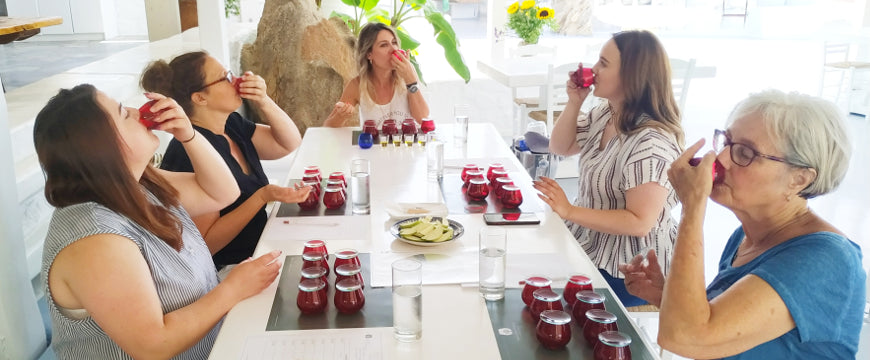
Mastering the Art of Olive Oil Tasting: Tips for a Flavourful Experience
Posted on
Olive oil is a popular and healthy ingredient used in cooking and dressings. Tasting olive oil is a unique and enjoyable experience that requires some knowledge and practice. In this guide, we will provide you with essential tips for olive oil tasting.
Firstly, it's important to select the right type of olive oil, such as extra-virgin olive oil, which is the highest quality olive oil. Check the label for information on the production method, origin, and harvest date.
Next, you need to use the appropriate glassware for olive oil tasting, such as a dark blue or green glass with a narrow rim. It's best to warm the glass beforehand to release the aroma of the oil.
When smelling the oil, pour a small amount into the glass and swirl it gently. Cover the glass with your hand to trap the aroma, and take a deep breath to smell the oil. You may notice various aromas such as grass, herbs, fruits, or nuts.
For tasting the oil, take a small sip and let it coat your tongue and palate. Swirl it in your mouth and inhale through your nose to assess the taste and texture. You may notice a fruity, bitter, or pungent taste, depending on the variety of olive and its ripeness. The texture may be smooth, velvety, or oily.
After tasting the oil, you need to evaluate its characteristics based on the intensity, complexity, balance, and persistence of the flavor. A high-quality olive oil should have a balanced and fruity taste with slight bitterness and pungency that indicate its antioxidant properties. It should also have a long-lasting flavor and a clean aftertaste.
In summary, olive oil tasting is a fun and informative experience that can help you appreciate the unique flavors and aromas of different types of olive oil. Follow these essential tips to become an expert in olive oil tasting and enjoy a flavorful experience.

Leave a comment: